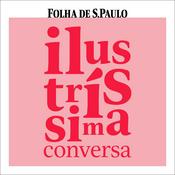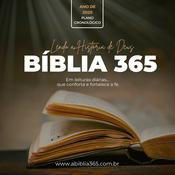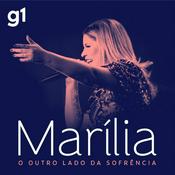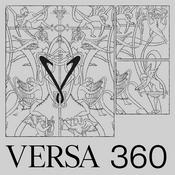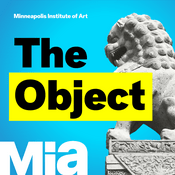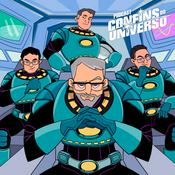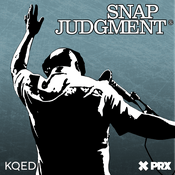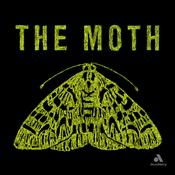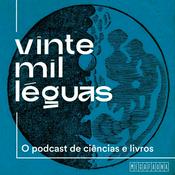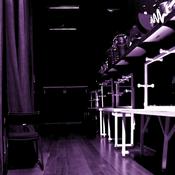157 episódios

Christmas is Carnival: Carols and Calendars
18/12/2025 | 27min
Historically, the celebration of Christmas and Carnival could overlap, and there is some reason to believe that customs associated with the former were inherited by the latter. A clue to this calendrical shift is offered by the Christmas song, “Carol of the Bells,” which uses the melody of an old Ukrainian New Year;s carol, one which dates back to the era in which New Year was celebrated in March (hence the springtime imagery of its original Ukrainian lyrics). Ukrainian postcard commemorating the folk song”Shchedryk” source of “Carol of the Bells” After a brief look at the variable date chosen to celebrate the New Year throughout European history, we take some time to rethink our modern understanding of what constitutes the Christmas season. The common notion that the season ends on December 25 or January 1, possibly including the weeks leading up to those dates, in historical understanding, was reversed, with Dec. 25 representing the start of Christmastide, which at the very least ran until Epiphany (Jan. 6) or Candlemas (Feb. 2). The merger of Christmas and Carnival is not only aided by the historically later end date of Christmastide, but also the variable start date for Carnival. A number of regional dates preferred for those festivities are discussed with Germany’s initiation of festivities on November 11 being the earliest. Another reason to suspect that Carnival inherited some of its customs from Carnival is the carnivalesque quality of the Christmas Feast of Fools celebrated anywhere from Dec. 26 to January 6. The wild, and sometimes dangerous revels celebrated on those days (and discussed in Episode 100) were ended by local bishops at roughly the same time that Carnival celebrations in France and Germany emerged, suggesting re-channeling of anarchic impulses and customs. Our discussion then turns to the Roman New Year, the January Kalends, which likely inspired chaotic elements around the Feast of Fools. Of particular interest here are accounts of celebrants dressing in animal hides and horns. a custom that seems to have survived in certain Carnival traditions, including a number discussed in my Carnival book. One of these, the Kurent of Slovenia, who happens to be rather similar to the Austrian Krampus across the country’s northern border. In Western Bulgaria too, another Carnival figure, the Kuker, in western regions also makes use of animal hides and horns (as well as bells). Bulgaria also provides us with an interesting 20th-century case study of the merger of the traditions of Christmas (or “Surva,” the Bulgarian New Year) merging with springtime fertility customs of Carnival, both strands being associated with the Kuker. We wrap up with a brief look at Slavic celebrations of the Christmas cycle as Koliade (various spellings), a name for Christmastide and the customs associated with it, particularly door-to-door “good luck visits” incorporating short plays and songs, kolyadka in Ukrainian, the original of “Carol of the Bells” (Shchedryk/”Bountiful Evening”) being one of these songs “New Year’s Carols” (Kolędnicy noworoczni) from “A Polish Year in Life, Tradition and Song” (1900). The sources for this show are Mr. Ridenour’s books The Krampus and the Old, Dark Christmas and A Season of Madness, Fools, Monsters, and Marvels of the Old-World Carnival.

A Werewolf in Court
25/11/2025 | 21min
In our second short episode for November, we take a close look at a the 1692 trial of Thiess of Kaltenbrunn, a purported werewolf in the town of Jürgensburg, in Livonia, (a Baltic region now divided between Estonia and Latvia). “Old Thiess,” as he was known, described himself as being a particularly exotic form of werewolf — one who served God in Hell. The testimony offered was so curious that we will be presenting the court transcripts verbatim, with nearly all exchanges between witness and judges included. Decide for yourself!

Horror, Fact, Fiction, and a Revelation
22/11/2025 | 19min
This is a special short episode looking at fictional evidence used to bolster horror narratives in literature, film, and broadcast media. We compare the found-footage phenomenon with earlier literary techniques and discuss some famous hoaxes and Halloween pranks, some historical and others closer to home.

Halloween Fortune-Telling Party
30/10/2025 | 37min
This year, in the tradition of Halloween fortune-telling, we have an interactive divination game you can play at home. It comes from aa 19th-century book on cartomancy called, The oracle of human destiny: or, the unerring foreteller of future events, and accurate interpreter of mystical signs and influences; through the medium of common cards. TO PLAY ALONG, you will need an ordinary DECK OF CARS or you could can draw your cards from a VIRTUAL DECK like the one on deck.of.cards. (https://deck.of.cards). You will also need to know the ELEMENTAL GROUP of your ASTROLOGICAL SIGN. They are: FIRE SIGNS: Aries, Leo, Sagittarius EARTH SIGNS: Taurus, Virgo, Capricorn AIR SIGNS: Gemini, Libra, Aquarius. WATER SIGNS: Cancer, Scorpio, Pisces. Fortunes read fall into these categories (in this order): Absent Friends and Relatives Travel Friendship and Enmity Health and Longevity Property Lost Love Wealth and Fortune Success A Potential Spouse Happiness, Misfortune There are 88 fortunes provided, so you’ll have more fun listening with friends who have different astrological signs. Or write down the signs of absent friends and draw cards on their behalf. HAPPY HALLOWEEN!

Mr. Ridenour’s Haunted Basement
27/10/2025
If you’ve been curious regarding Mr. Ridenour’s and Mrs. Karswell’s troubles with anomalous events in the house, this short episode should answer some of your questions as Dr. Bartusch and crew attempt to restore order.
Mais podcasts de Arte
Podcasts em tendência em Arte
Sobre Bone and Sickle
Ouça Bone and Sickle, Rádio Companhia e muitos outros podcasts de todo o mundo com o aplicativo o radio.net
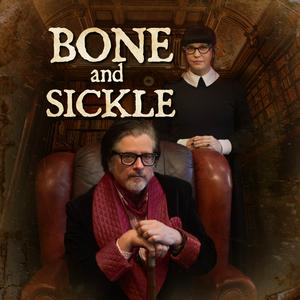
Obtenha o aplicativo gratuito radio.net
- Guardar rádios e podcasts favoritos
- Transmissão via Wi-Fi ou Bluetooth
- Carplay & Android Audo compatìvel
- E ainda mais funções
Obtenha o aplicativo gratuito radio.net
- Guardar rádios e podcasts favoritos
- Transmissão via Wi-Fi ou Bluetooth
- Carplay & Android Audo compatìvel
- E ainda mais funções


Bone and Sickle
baixe o aplicativo,
ouça.

